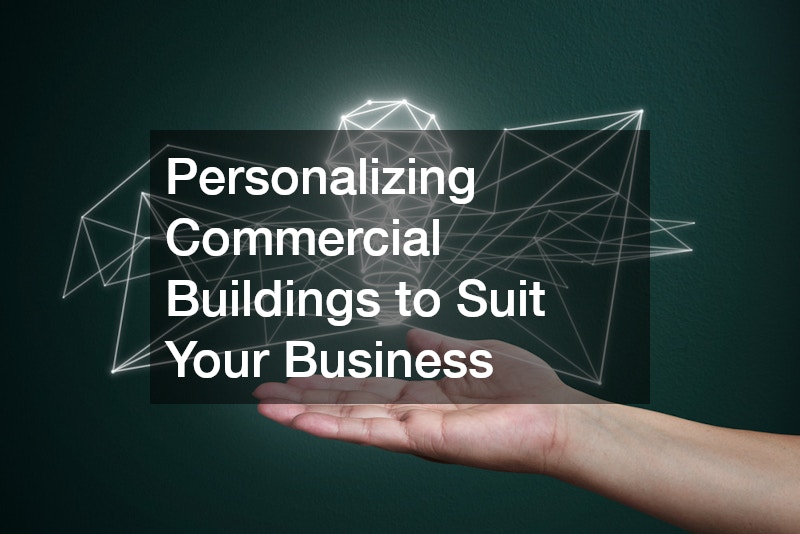Personalizing a commercial building goes far beyond aesthetic choices or interior decoration. Thoughtful customization can transform a generic space into a strategic asset that enhances business operations, reinforces brand identity, and elevates the overall customer experience. In an increasingly competitive market, businesses that invest in personalized environments not only make a lasting impression on clients but also create functional workplaces that support employee productivity and long-term growth. From designing efficient layouts to integrating advanced technologies and sustainability measures, personalizing a commercial building ensures every element reflects the unique identity and operational needs of a company. Additionally, services such as commercial roofers, local roofers, and commercial gate installation contribute to both the safety and the visual appeal of the property, making personalization an all-encompassing approach.
Why Personalize a Commercial Building?
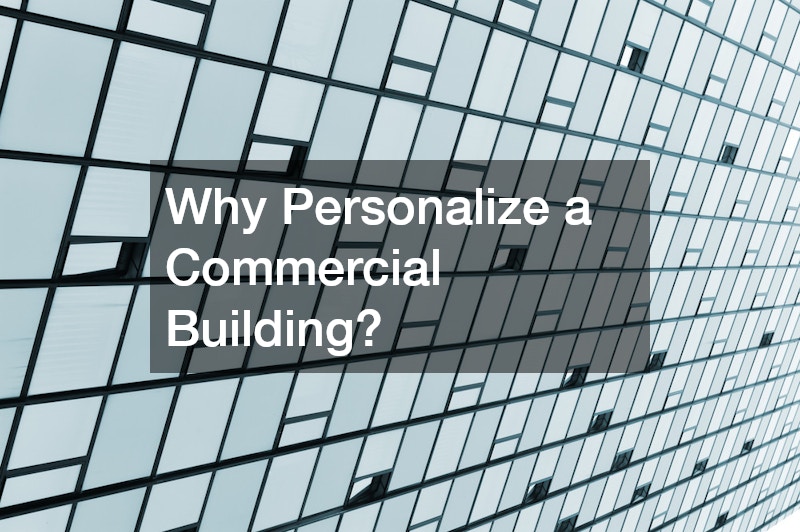
Enhancing Brand Identity
A commercial building serves as a tangible representation of a company’s brand. From exterior signage to interior finishes, every choice communicates values, professionalism, and the company’s unique personality. Businesses can use commercial painters to create distinct color schemes, murals, or branded accents that reflect their ethos. Strategic personalization ensures that the physical environment aligns with marketing efforts, creating a cohesive and memorable brand experience for clients and visitors alike. Even the selection of commercial paving around the property contributes to brand identity by projecting professionalism and care in every detail, from the driveway to pedestrian pathways.
Improving Customer Experience
The layout, design, and functionality of a commercial property significantly influence how customers perceive and interact with a business. Personalization enables companies to create intuitive, welcoming, and efficient spaces. For retail or service-oriented businesses, carefully planned entrances and reception areas can improve customer flow, minimize wait times, and enhance overall satisfaction. Incorporating services such as commercial gate installation ensures secure and controlled access, providing both safety and a polished first impression. Personalized spaces also allow businesses to integrate printing services for informational displays, brochures, or branded signage, further enhancing the customer experience and reinforcing brand messaging.
Increasing Employee Productivity
The workplace environment has a direct impact on employee motivation and efficiency. Personalizing a commercial building allows for the creation of spaces that accommodate specific work styles and operational needs. Open workstations, collaborative zones, and private offices can be arranged to facilitate communication and reduce distractions. Well-designed spaces, complemented by ergonomically optimized furniture, natural lighting, and even strategically placed commercial roofers’ input on maintenance and climate control, create a comfortable and productive environment. Employees benefit from spaces that are visually appealing, functional, and aligned with their workflow requirements, which ultimately boosts morale and retention.
Adapting to Business Operations
Every business has unique operational requirements, and personalized buildings are designed to meet those specific needs. For instance, medical facilities may require specialized consultation rooms, whereas creative agencies often prioritize flexible meeting areas and collaborative hubs. Even outdoor considerations, such as commercial paving, snow removal services, and building contractors managing parking or loading zones, influence operational efficiency. By tailoring the building layout, utilities, and access points to the nature of the business, companies reduce operational bottlenecks and enhance the overall functionality of the space, ensuring employees and clients can navigate the property with ease.
Future-Proofing Your Investment
Investing in personalization is also a forward-looking strategy. Flexible designs, modular spaces, and scalable technologies allow buildings to adapt as business needs evolve. Integrating advanced security service systems or commercial roofers’ recommendations on roofing durability ensures long-term protection and adaptability. Future-proofing helps prevent costly renovations, extends the lifespan of key building components, and allows businesses to accommodate growth, technology upgrades, or new operational processes with minimal disruption. By planning for both current and future requirements, companies can maximize the return on their commercial real estate investments.
What are the Key Elements to Consider?
Layout and Space Utilization
Effective space planning is central to personalization. Every square foot should be allocated to maximize operational efficiency while maintaining comfort. Businesses must consider staff circulation, customer flow, and accessibility when designing interior layouts. Collaborating with building contractors ensures that space is used optimally, whether for office areas, retail displays, or storage. Outdoor considerations, including commercial paving for parking and walkways, also influence how effectively space is utilized and perceived by both staff and visitors.
Design and Aesthetics
Visual appeal is critical for making a lasting impression. Interior and exterior designs, including paint choices from a commercial painter, finishes, textures, and lighting, all contribute to a cohesive brand message. The exterior appearance, often maintained by local roofers and commercial roofers, also signals professionalism and quality. A well-executed design creates a welcoming environment for clients and a motivating space for employees. Furthermore, incorporating elements like commercial gate installation adds a refined sense of security while enhancing visual appeal, showing attention to detail in every aspect of the property.
Technological Integration
Technology plays a pivotal role in modern commercial buildings. Smart lighting, climate control systems, digital signage, and automated access controls improve efficiency, safety, and customer satisfaction. Integration of advanced security service systems protects employees and assets while offering peace of mind. Additionally, leveraging printing services within the facility can streamline communication with both clients and staff, while digital workflow management and IoT integration allow for responsive, adaptive operations.
Sustainability and Energy Efficiency
Sustainable building practices are no longer optional; they are increasingly expected by clients, employees, and regulators. Incorporating energy-efficient lighting, low-consumption appliances, and eco-friendly materials reduces operational costs and demonstrates corporate responsibility. Sustainable outdoor solutions, such as low-maintenance commercial paving and efficient snow removal services, further reinforce environmental stewardship. These measures can also contribute to obtaining green certifications, which improve a company’s market reputation and appeal to environmentally conscious clients and tenants.
Safety and Compliance
Compliance with safety and regulatory standards is a foundational aspect of personalization. This includes meeting local building codes, health and safety regulations, and accessibility requirements. Collaboration with professional building contractors, commercial roofers, and security service providers ensures that all safety measures are integrated seamlessly. From fire alarms to secure commercial gate installation, adhering to regulations protects occupants while reinforcing trust in the organization’s commitment to safety.
How to Choose the Right Design Professional?
Qualifications and Experience
Selecting the right design professional is crucial for successful personalization. Professionals should have relevant qualifications, industry certifications, and experience with projects similar to your building type. Those familiar with commercial roofers’ projects or commercial paving integration bring valuable insights into material durability, maintenance, and functionality, ensuring a design that is both beautiful and practical.
Portfolio and Style Compatibility
Reviewing a professional’s portfolio helps assess whether their style aligns with your vision. Case studies of previous work, including projects where commercial painters, commercial roofers, or commercial gate installation were involved, demonstrate their capacity to integrate diverse elements while maintaining a coherent aesthetic. Compatibility in style ensures that the final design reflects the brand identity and operational needs of the business.
Understanding of Your Needs
A successful design professional listens closely to client requirements. They should understand your operational workflows, brand objectives, and long-term goals. Professionals who have experience coordinating with building contractors, security service providers, or commercial real estate appraisals teams are better equipped to develop solutions that are both practical and aligned with strategic priorities.
Client Testimonials and Reviews
Testimonials and online reviews provide insight into a design professional’s reliability, communication, and ability to deliver results. Positive feedback from businesses that required commercial paving, snow removal services, or commercial roofers’ expertise underscores a professional’s capacity to handle complex projects and deliver value.
Cost and Budget Considerations
Budget management is an essential aspect of any personalization project. Experienced professionals provide accurate cost estimates for design, construction, and technology integration. Understanding costs associated with commercial painters, commercial gate installation, or security service systems ensures that projects remain financially feasible without compromising quality or operational efficiency.
What is the Role of Technology in Commercial Building Personalization?
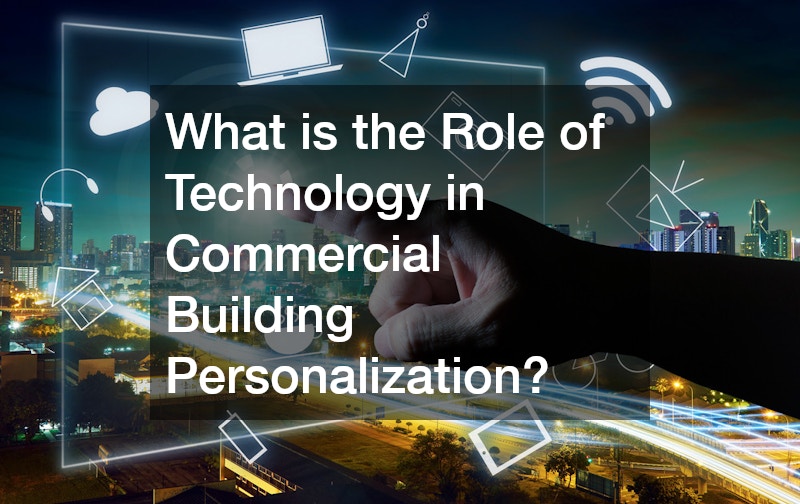
Smart Building Technologies
Smart technologies enhance efficiency, convenience, and security. Automated lighting, heating, and cooling systems improve energy efficiency while creating a comfortable environment for employees and clients. Integrating smart building solutions with security service systems allows businesses to monitor access and respond quickly to potential threats.
Integration of IoT Devices
Internet of Things (IoT) devices connect building systems for enhanced management and responsiveness. IoT sensors can track occupancy, energy usage, and environmental conditions, allowing businesses to optimize operations. Integration with commercial gate installation and security service systems further ensures that all aspects of the building are coordinated and secure.
Advanced Security Systems
Robust security systems are integral to personalized commercial spaces. Surveillance cameras, access control, and alarm systems protect both employees and assets. Partnering with professional security service providers ensures comprehensive protection while maintaining a welcoming atmosphere for visitors.
Building Information Modeling (BIM)
BIM technology enables detailed visualization of design and construction projects. By modeling every element, from commercial roofers’ work to interior layouts and commercial paving plans, BIM allows for precise planning, improved coordination, and reduced errors during construction or renovation.
Automated Solutions and Controls
Automation simplifies building management by integrating lighting, climate, and security systems. Automated controls improve operational efficiency, reduce energy costs, and allow staff to focus on core business activities. Businesses that invest in these solutions also demonstrate a commitment to innovation and forward-thinking practices.
How to Incorporate Sustainable Practices?
Energy-efficient Lighting and Appliances
Switching to energy-efficient lighting and appliances reduces operational costs and environmental impact. Incorporating low-energy HVAC systems, lighting controls, and efficient water heaters complements the overall sustainability strategy of the building.
Use of Renewable Energy Sources
Solar panels, wind turbines, or other renewable energy solutions can supplement traditional energy sources. Consulting with commercial roofers ensures proper installation and long-term durability of roof-mounted solar systems, enhancing both efficiency and environmental responsibility.
Water Conservation Techniques
Sustainable water management includes low-flow fixtures, water recycling, and irrigation systems for landscaped areas. Snow removal services and commercial paving must also consider drainage and water runoff to prevent damage and support environmental stewardship.
Sustainable Building Materials
Using recycled, locally sourced, or low-impact materials reduces the environmental footprint. Materials chosen for commercial paving, roofing, or interior finishes contribute to the overall sustainability profile while maintaining aesthetic appeal and durability.
Green Certifications and Standards
Achieving green certifications, such as LEED, demonstrates a commitment to sustainable design and operations. Certified buildings often attract tenants, clients, and employees who value environmentally responsible practices, enhancing both brand reputation and market competitiveness.
What are the Costs Involved in Personalizing a Building?
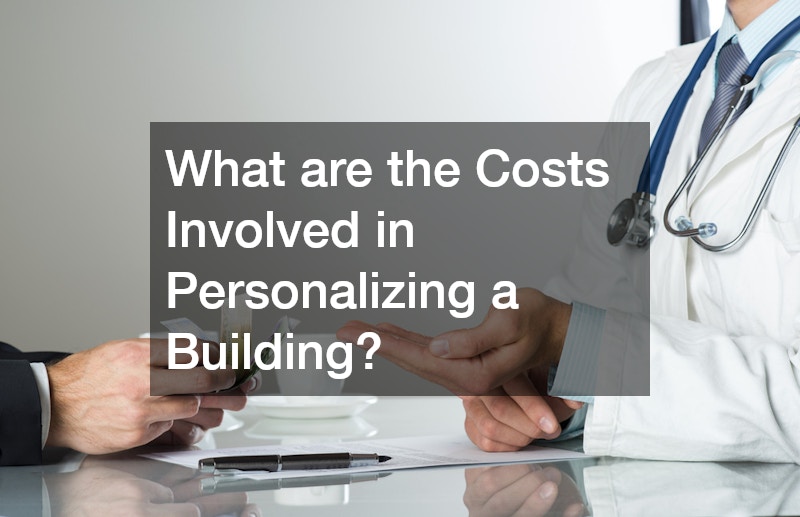
Initial Design and Planning Costs
Personalization begins with careful planning and professional design. Costs include consultations, architectural renderings, and feasibility studies. Investments in design professionals ensure that subsequent construction, including commercial roofers’ work or commercial gate installation, is executed efficiently and effectively.
Construction and Renovation Expenses
Construction costs encompass labor, materials, and equipment needed to implement the design. Working with reliable building contractors ensures that renovations, commercial paving projects, and painting services meet quality standards while adhering to the project timeline.
Technology Integration Costs
Integrating advanced technology, such as smart building systems, IoT devices, and security service systems, involves upfront costs but delivers long-term benefits in efficiency, safety, and operational control.
Maintenance and Operational Costs
Ongoing expenses include routine maintenance of roofing, paving, security systems, and other personalized features. Partnering with local roofers, snow removal services, and security providers ensures reliable upkeep and reduces the risk of unexpected repairs.
Cost-saving Opportunities
Investments in energy-efficient appliances, sustainable materials, and durable construction solutions can yield significant cost savings over time. Efficient commercial paving and roof installation practices minimize repairs, while automated systems reduce utility expenses, demonstrating that personalization can be financially prudent.
How to Ensure Compliance with Regulations?
Understanding Local Zoning Laws
Commercial buildings must adhere to zoning regulations that dictate allowable uses, building height, and other restrictions. Consulting with local authorities and building contractors ensures that all personalization efforts comply with regulations from the outset.
Compliance with Health and Safety Regulations
Health and safety compliance is essential for employee well-being and legal adherence. Incorporating features such as fire exits, ventilation, and accessibility aligns with regulatory requirements and protects occupants.
Building Codes and Permits
Proper permits and adherence to building codes are critical when implementing structural changes, roofing updates by commercial roofers, or installing commercial gates. Compliance prevents legal issues and ensures that all work meets industry standards.
Accessibility Requirements
Personalization must consider accessibility for all users. Incorporating ramps, wide corridors, and adaptable facilities ensures inclusivity and complies with regulations such as the Americans with Disabilities Act.
Fire and Safety Standards
Fire safety, alarm systems, and emergency protocols must be integrated into building personalization. Security service providers play a key role in maintaining safety standards, providing monitoring and rapid response capabilities.
How Can Personalization Impact Employee Morale?
Creating a Comfortable Workplace
A personalized environment enhances comfort, with ergonomic furniture, optimized lighting, and thoughtfully designed spaces. Comfortable workplaces increase engagement, productivity, and overall satisfaction.
Boosting Creativity and Collaboration
Flexible layouts and collaborative spaces foster creativity and teamwork. Integrating technology and open design concepts encourages idea sharing and problem-solving among staff.
Enhancing Job Satisfaction
Employees who feel valued in a thoughtfully designed space report higher job satisfaction. Personalization shows investment in their well-being and professional experience.
Promoting Health and Wellbeing
Features such as natural lighting, air quality control, and quiet zones support physical and mental health. Sustainable practices, such as energy-efficient systems and green materials, also contribute to a healthier work environment.
Reducing Stress Levels
Well-planned layouts, efficient workflows, and aesthetic appeal reduce stress and fatigue. Employees benefit from a space that balances functionality and comfort, encouraging sustained focus and performance.
What are Some Successful Case Studies?
Retail Spaces
Retailers that integrate personalized signage, commercial paving, and branded design elements enhance customer experience and drive sales. Commercial painters and security service systems ensure both visual appeal and safety for shoppers.
Corporate Offices
Corporate environments benefit from tailored layouts, ergonomic workstations, and integrated technologies. Smart building systems, local roofers’ expertise, and commercial gate installation create secure, efficient, and attractive office spaces.
Hospitality Venues
Hotels and restaurants utilize personalized designs to create memorable guest experiences. Incorporating sustainable practices, commercial paving for outdoor areas, and reliable security services enhances both aesthetics and functionality.
Educational Facilities
Schools and universities that invest in personalized buildings improve learning environments. Thoughtful layouts, energy-efficient systems, and durable construction managed by building contractors provide safe, engaging spaces for students and staff.
Mixed-use Developments
Mixed-use properties combine commercial, residential, and retail spaces. Personalization ensures that each function meets specific needs, from commercial roofers maintaining structural integrity to printing services providing clear signage and information for tenants and visitors.
How to Maintain Personalized Features Over Time?
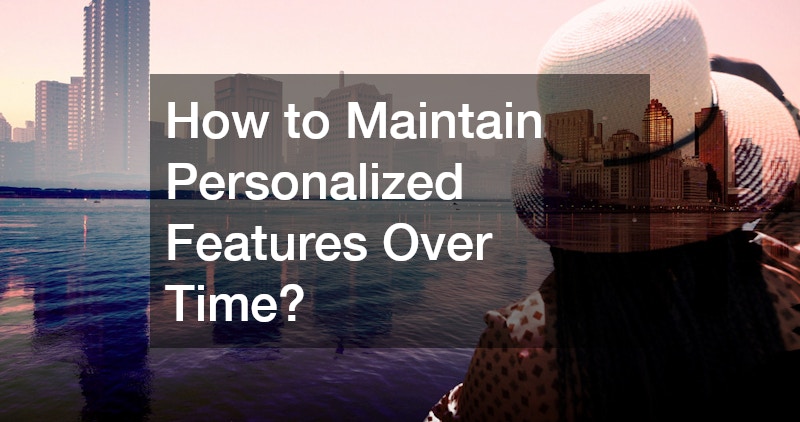
Regular Maintenance Schedules
Routine upkeep of roofing, paving, and painted surfaces preserves appearance and functionality. Local roofers and building contractors play a crucial role in scheduled inspections and preventative maintenance.
Upgrading Technologies and Systems
Periodic updates to security service systems, smart technologies, and IoT devices keep the building current and operationally efficient. Staying ahead of technology trends ensures continued relevance and performance.
Adapting to Business Growth and Changes
As businesses evolve, personalized spaces must adapt. Expanding office areas, reconfiguring layouts, or updating commercial gate installations accommodate new operational demands without disrupting workflow.
Staff Training and Engagement
Employees should be trained on new systems, including technology integrations, security protocols, and sustainable practices. Engagement ensures that personalized features are used effectively and maintained responsibly.
Leveraging Feedback and Analytics
Collecting input from staff and clients provides insight into the effectiveness of personalized elements. Analytics on energy use, traffic flow, and space utilization inform future improvements and enhance overall building performance.
Closing Thoughts
Personalizing a commercial building is a strategic investment that goes beyond decoration. By thoughtfully integrating design, technology, sustainability, and functionality, businesses can enhance brand presence, optimize operations, and improve both employee and customer experiences. Working with building contractors, commercial roofers, local roofers, and providers of commercial gate installation, commercial paving, snow removal services, commercial painters, and security service ensures a comprehensive approach that addresses both immediate needs and long-term growth. When executed carefully, personalization transforms a building into a powerful tool that reflects the organization’s identity, supports operational efficiency, and adapts to evolving business goals.
